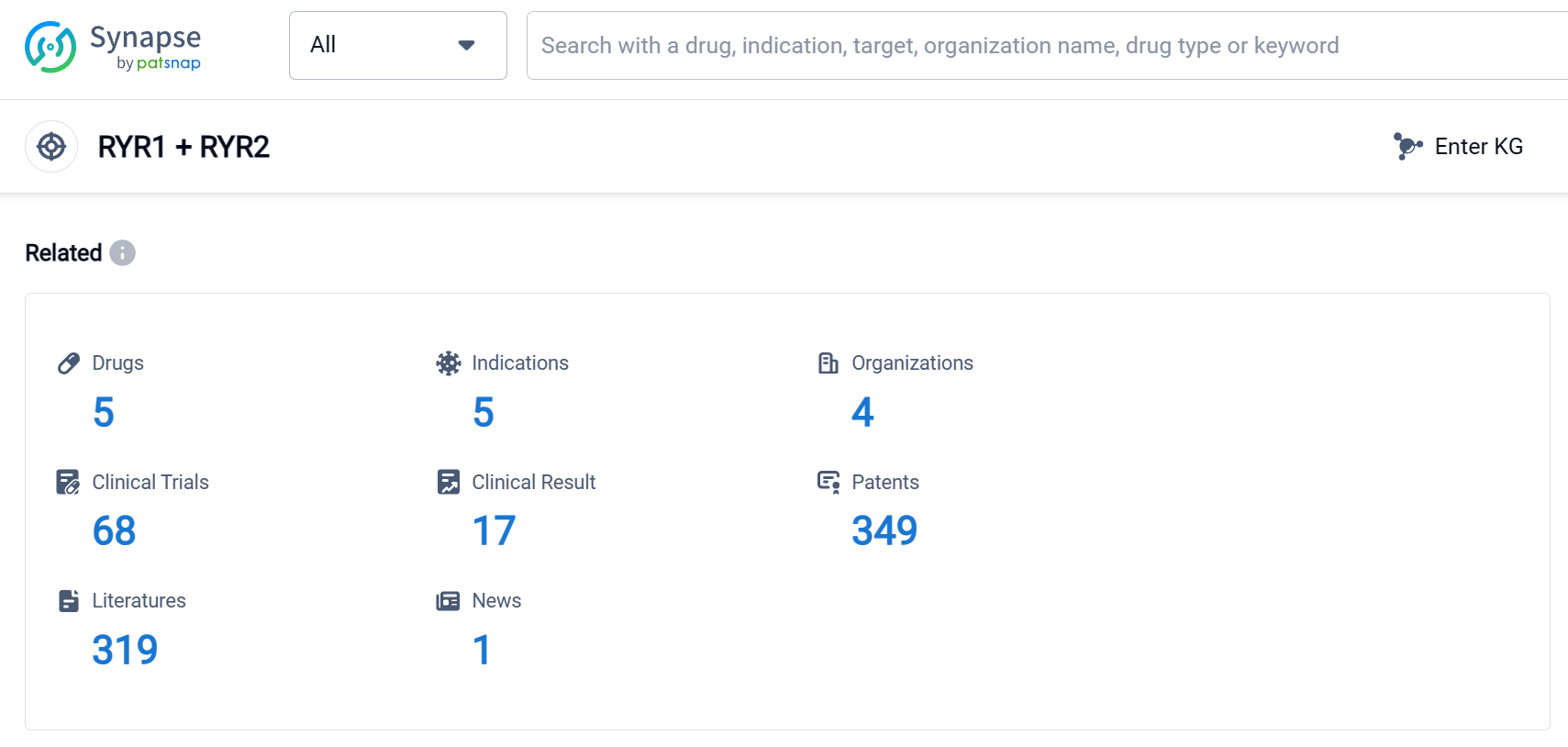Decoding Tetracaine: A Comprehensive Study of its R&D Trends and Mechanism on Drug Target
Tetracaine's R&D Progress
Tetracaine is a small molecule drug that is primarily used as an anesthesia agent. It targets two specific receptors, RYR1 and RYR2, which are involved in calcium release and regulation within cells. This drug is classified as a small molecule, indicating that it has a low molecular weight and can easily penetrate cell membranes.
In terms of therapeutic areas, Tetracaine is primarily indicated for anesthesia. It is commonly used in medical procedures to numb specific areas of the body, providing pain relief during surgeries or other invasive interventions. The drug works by blocking nerve signals in the area where it is applied, effectively numbing the region and preventing the transmission of pain signals to the brain.
The highest R&D phase of this drug is approved.
While Tetracaine is primarily used for anesthesia, it is worth noting that it falls under the therapeutic area of "Other Diseases." This suggests that the drug may have potential applications beyond anesthesia, although further research and clinical trials would be needed to explore these possibilities.
👇Please click on the image below to directly access the latest data (R&D Status | Core Patent | Clinical Trial | Approval status in Global countries) of this drug.
Mechanism of Action for Tetracaine: RYR1 modulators and RYR2 modulators
RYR1 modulators and RYR2 modulators are substances or compounds that have an effect on the activity of the ryanodine receptor type 1 (RYR1) and ryanodine receptor type 2 (RYR2), respectively.
From a biomedical perspective, ryanodine receptors are ion channels found in the sarcoplasmic reticulum of muscle cells. They play a crucial role in regulating the release of calcium ions, which is essential for muscle contraction. RYR1 is predominantly found in skeletal muscle, while RYR2 is mainly present in cardiac muscle.
RYR1 modulators are substances that can either enhance or inhibit the activity of RYR1. By modulating RYR1, these compounds can influence the release of calcium ions from the sarcoplasmic reticulum in skeletal muscle cells, thereby affecting muscle contraction and function.
Similarly, RYR2 modulators can affect the activity of RYR2 in cardiac muscle cells. As RYR2 is primarily responsible for regulating calcium release in the heart, modulating its activity can have implications for cardiac muscle contraction and overall cardiac function.
These modulators can have various therapeutic applications. For example, in the context of muscle disorders like malignant hyperthermia or central core disease, RYR1 modulators may be used to stabilize or normalize the abnormal calcium release from the sarcoplasmic reticulum. In cardiac conditions such as arrhythmias or heart failure, RYR2 modulators could potentially be utilized to regulate calcium handling and restore normal cardiac function.
It's important to note that the specific mechanisms and effects of RYR1 and RYR2 modulators can vary depending on the compound and the context in which they are used.
Drug Target R&D Trends for Tetracaine
According to Patsnap Synapse, as of 2 Sep 2023, there are a total of 5 RYR1 + RYR2 drugs worldwide, from 4 organizations, covering 5 indications, and conducting 68 clinical trials.
The analysis of the current competitive landscape for target RYR1 + RYR2 reveals several key findings. AETAS Pharma Co., Ltd., Cetylite Industries, Inc., and The Pennsylvania State University are among the companies showing the fastest growth in this field. Approved drugs targeting anesthesia and lacerations indicate successful development in relevant indications. Small molecule drugs have shown the most rapid progress, with two already approved. The United States and Japan are leading in terms of development, suggesting a competitive landscape in these countries. Overall, the target RYR1 + RYR2 shows promising potential for future development and approvals in various indications and drug types.
👇Please click on the picture link below for free registration or log in directly if you have a freemium account, you can browse the latest research progress on drugs, indications, organizations, clinical trials, clinical results, and drug patents related to this target
Conclusion
In summary, Tetracaine is a small molecule drug that targets RYR1 and RYR2 receptors. It is primarily used as an anesthesia agent, providing pain relief during medical procedures. The drug has reached the highest phase of development. While its therapeutic area is listed as "Other Diseases," its active indication is anesthesia. Further research may uncover additional potential uses for Tetracaine beyond its current approved indication.






